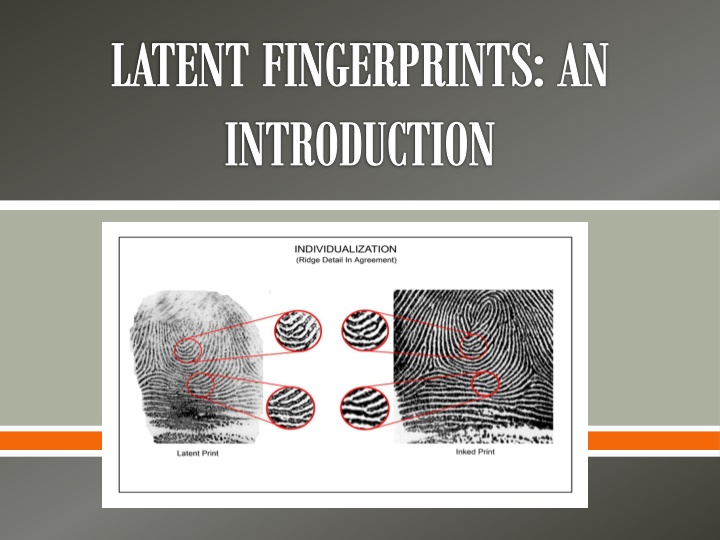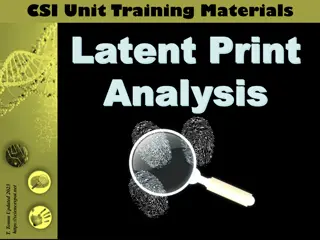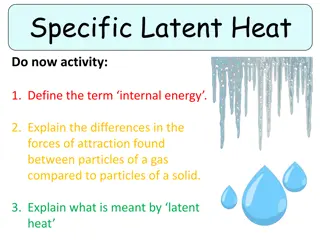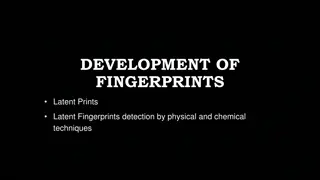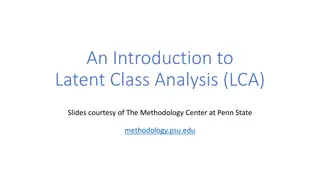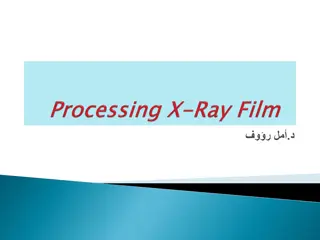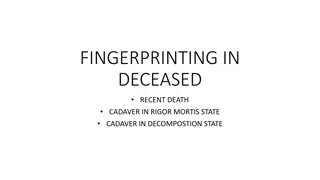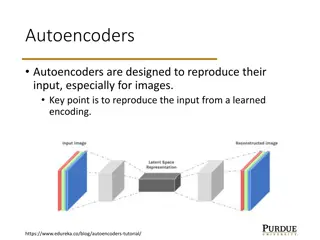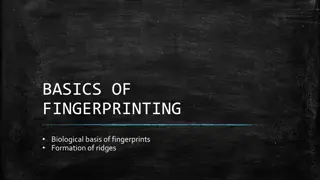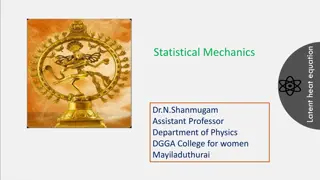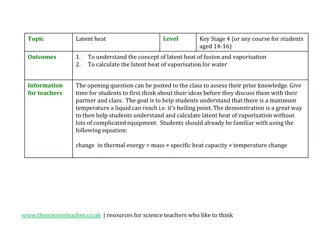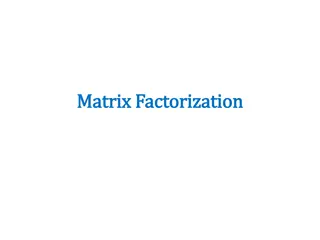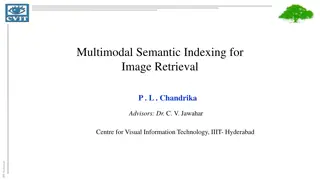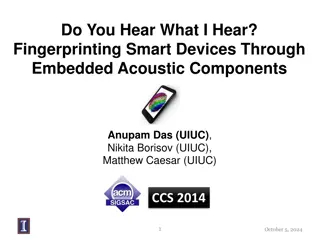Latent Fingerprints and Development Processes
Delve into the world of latent fingerprints with an introduction to fingerprint patterns, development processes using black, magnetic, and silver powders, as well as techniques involving brushes, wands, and lifting methods. An exercise assignment explores print development on various surfaces and print analysis of recovered patterns.
Uploaded on Oct 06, 2024 | 0 Views
Download Presentation

Please find below an Image/Link to download the presentation.
The content on the website is provided AS IS for your information and personal use only. It may not be sold, licensed, or shared on other websites without obtaining consent from the author.If you encounter any issues during the download, it is possible that the publisher has removed the file from their server.
You are allowed to download the files provided on this website for personal or commercial use, subject to the condition that they are used lawfully. All files are the property of their respective owners.
The content on the website is provided AS IS for your information and personal use only. It may not be sold, licensed, or shared on other websites without obtaining consent from the author.
E N D
Presentation Transcript
LATENT FINGERPRINTS: AN INTRODUCTION
FINGERPRINT PATTERNS http://www.crimescene-forensics.com/Fingerprints.html
DEVELOPMENT PROCESS BLACK CARBON POWDER:
DEVELOPMENT PROCESS MAGNETIC POWDER:
DEVELOPMENT PROCESS SILVER POWDER:
DEVELOPMENT PROCESS SILVER IMAGE PRINTS:
DEVELOPMENT PROCESS FINGERPRINT BRUSH:
DEVELOPMENT PROCESS MAGNETIC WAND:
DEVELOPMENT PROCESS LIFT AND PLACE ON CARD:
DEVELOPMENT PROCESS LIFT AND PLACE ON CARD:
EXERCISE ASSIGNMNENT Surface: For this exercise, I developed latent print(s) from a glass, coffee mug, sheet of paper, ceramic tile etc. It has a smooth, non-porous surface which was flat, rounded, concave, etc. Powder selection: I used black powder or magnetic powder and explain why. Results: I was able to obtain approximately 2, 3, 4 prints from the object selected. Explain whether or not you can see ridge detail with the naked eye.
EXERCISE ASSIGNMNENT Print Analysis: o What type of print patterns were recovered? o All whorls, loops, arches, or combinations thereof.
